On Wednesday the 27th of October, the 2021/22 cohort of trainees were given the opportunity to visit the Bodleian Libraries Book Storage Facility (BSF), on the outskirts of Swindon.
Why is the BSF necessary? A brief history of legal deposit:
- The Bodleian Library is one of six copyright libraries in the UK, which entitles the Library to receive a copy of any material published in the UK, under the Legal Deposit Libraries Act (2003).
- This elite status was first obtained by Sir Thomas Bodley, who was responsible for re-establishing the University Library in 1602.
- Sir Thomas Bodley wanted to ensure that the library (now Duke Humfrey’s Reading Room) would thrive, continuing to be endowed with items. In 1610, he obtained an agreement with the Stationers’ Company, which ensured that the Bodleian Library could claim a copy of everything printed under royal licence.
- As such, the collections belonging to the Bodleian Libraries have expanded significantly and exponentially over the last 400 years, with the current total standing at approximately 13 million items.
- At the beginning of this century, concerns began to grow regarding the limited storage capacity in Oxford, and discussions for an offsite storage facility began.

The BSF was officially opened in 2010, costing £26 million and housing 7 million books, maps, manuscripts, newspapers, periodicals and various other items that were slowly overwhelming the Bodleian’s dwindling capacity. The move took 15 months, with an average of 23,000 items being delivered, processed and shelved per day! The original idea was to store low usage items, drawing together collections from a variety of Bodleian storage facilities, including: the Underground Bookstore (now the Gladstone Link), the New Bodleian Library (now the Weston Library) and even some legal papers kept in salt mines in Cheshire!
Since 2010, the BSF has continued to grow. The collection now stands at roughly 9.5 million items, held on 153 miles of shelving and configured to accommodate various sizes of items. However being offsite doesn’t mean the books are inaccessible. The BSF team provide an essential service to readers through their book delivery service, which allows readers to access material held offsite, requested material being delivered to specific Bodleian reading rooms once a day, 5 days a week*. This allows readers to gain access to an incredible amount of physical material quickly and easily, which significantly benefits study.
*COVID scheduling still applies
Naturally, we were all very excited to visit the BSF, but in particular the trip was of interest to me as the Old Bodleian trainee. The Old Bod receives approximately 80% of the books ordered from the BSF, so I was determined to gain a greater understanding of the processes that allow items to be found, picked, processed and delivered to our library.
Arrival, Introductions and Lots of Tea:
The journey from Oxford to Swindon takes about 50 minutes, which is the route the delivery van takes twice a day to deliver and collect the books from our libraries.
Upon arrival, we were greeted by Lindsay (Bodleian Storage and Logistics) and Chris (Collection Co-ordinator), who provided us with lots of tea and biscuits, before we were given an introductory presentation about the BSF. This included some brilliant information about the formation of the facility, and the ongoing projects that are being managed at the BSF. For example, libraries at different academic institutions have been able to store vast amounts of their collections whilst they renovate/remodel their own buildings.
The Processing Floor:

Upon the conclusion of the presentation, we were shown directly into the processing room, which was actually the size of a small warehouse! This is where the majority of the work is carried out, accompanied by a rotating playlist of music chosen by the staff. On this occasion, we were treated to some 80s hits as we were led into the delivery room.
Delivery Room
The delivery room takes up the last part of the warehouse, and it is where the vans are loaded and unloaded with book deliveries. The room provides shelter, so that the books are never impacted by the weather.
Sending Books
Next, is the area where books are collected, processed and packaged – ready to be sent out to the various libraries for collection. Seven times a day, a list of requested items is printed, automatically organised into an order that allows the drivers to navigate the most effective route through the aisles. The books are then collected by staff, who package them into distinct trays to be processed. At this station, the books are scanned in to the computer and their end destination is listed. This information allows staff to know where the item is heading, which will dictate where the item needs to be stored before packaging. Just before delivery, these books are then boxed up, weighed to ensure that no box is too heavy for an individual to lift, and moved to the delivery room ready to be loaded.
Receiving Books
At the other end of the processing room is the returns desk. Here books are unboxed, scanned back into the BSF and placed on two distinct benches: legal deposit and non-legal deposit. Books are separated by size, and placed into rows according to their aisle location. These rows are also divided into grids. The grids help to manage the returns process, as they are the exact same size as the boxes that the books are packaged back into, in order to be returned to the shelves.
Stock Check Station
The final area that we were shown in the processing room was the stock check station. Here we were met by Lisa (Business Process and Project Manager), explained the importance of this station. In order to ensure that information about the books is correct and current, items are brought through from the stacks and scanned into the computer. This ensures that books can be easily located and readers can request items with ease, as items are accounted for at all times.
The Main Floor:
Following the tour of the processing floor, we were joined by Teresa (Team Leader at the BSF) and led up to a set of large doors, ready to be shown the internal workings of the main warehouse. As the doors slide up, the stacks were revealed – which at eleven metres high was a rather impressive and intimidating sight! 
The main floor is made up of 4 sections: two legal deposit and two non-legal deposit.
The warehouse is kept at approximately 50% humidity and temperature controlled at 18 degrees, with discreet fans to ensure any dust is removed, which all helps to preserve the books in the best condition. In addition to this, there are 15,000 sprinkler heads dotted around the facility, which are fuelled by two huge water tanks – in case of emergency. Although it seems drastic – and slightly horrifying – to think of books being doused with water, there are not many alternatives. Additionally, as Lindsay pointed out, there is a 1 in 6 million chance of a sprinkler being set off in error, and “it is easier to repair a book damaged by water, than a book destroyed by fire”.
Book Organisation
Books in the stack are organised by three barcodes, which are located:
- On the shelf on which the book is located
- On the box in which the book is located
- On the book itself.
This system allows for books to be easily moved to different locations in the stack, which is necessary when reorganising (for instance if books are heading back to be stored permanently in libraries, or are in high demand so convenience dictates a more accessible location).
 This organisational structure allows books to be located in approximately a minute, which is very impressive, however the randomised order of books seems an alien concept to us as library trainees – where are all the shelfmarks?
This organisational structure allows books to be located in approximately a minute, which is very impressive, however the randomised order of books seems an alien concept to us as library trainees – where are all the shelfmarks?
Book Collection
Books are collected by staff, using machines that are a cross between a forklift and a cherry-picker. Staff will manoeuvre to the beginning of the relevant aisle, before they are magnetically connected to a metal guide on the floor, which allows them to navigate in precise straight lines through the narrow aisles. Once they reach the correct column of shelves, they are able to raise the platform to the correct shelf height and slide out the necessary archive tray. The books in the tray are naturally sorted according to popularity, as the high demand items are usually returned to the front of the tray.
Maps, Masks and Miscellaneous Items
Alongside the incredibly impressive shelves, the BSF stores a vast collection of additional items that don’t fit neatly into archive trays. These items are divided across 5 levels: 4 levels of plan-chests (thin drawers designed to hold the 1.5 million maps stored at the BSF – see below), and 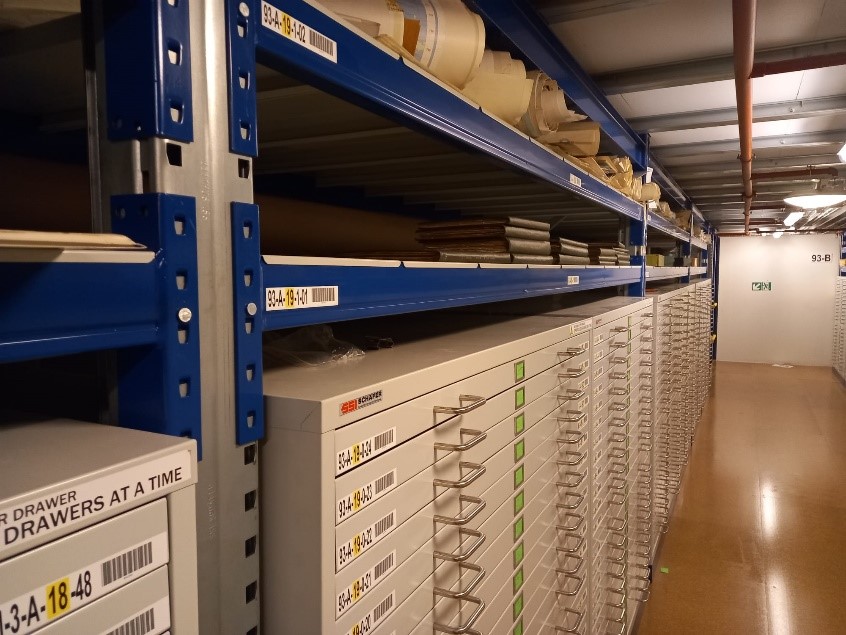 1 level of additional shelving. The latter holds a variety of papers, artefacts and pieces of art from across the libraries. We were shown around 2 levels, which included viewing:
1 level of additional shelving. The latter holds a variety of papers, artefacts and pieces of art from across the libraries. We were shown around 2 levels, which included viewing:
- A beautifully illustrated map of 1800s London, sketched from the view of a hot air balloon
- A horrifying death mask, courtesy of the Ashmolean museum
- An abnormally large book, created by gluing regular A4 sized pages onto A1 sized pages
The Scanning Room:
We concluded the visit with a look inside the scanning room, in which a dedicated team of two work through scanning requests from readers. This became an essential service for readers during the pandemic, as the scanning facilities allowed students to continue accessing resources remotely, when they were unable to enter the physical libraries. This service continues to be popular to this day, with the BSF team completing over 1000 individual page scans per day!
Final Thoughts:
We were all really thankful for the time that Lindsay, Lisa, Teresa and Chris took to make us feel welcome, and for their kindness in showing us around the BSF. Overall this was a brilliant trip and an unmissable opportunity to look behind the doors of the Bodleian Libraries largest storage facility.
© All images come courtesy of the Graduate Library Trainees, past and present (Daniel Haynes, Heather Barr, Lucy Davies, Sophie Lay)




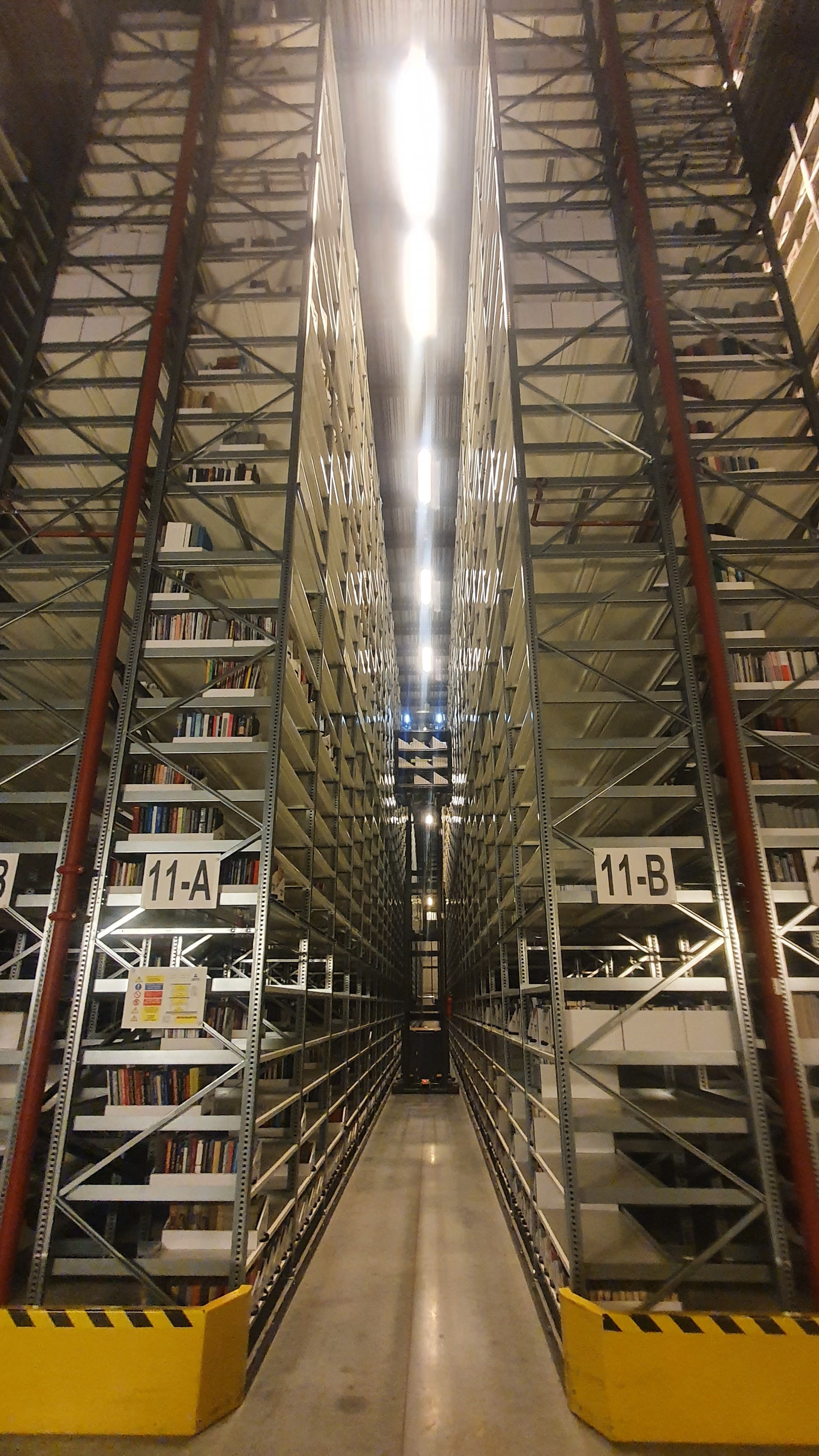

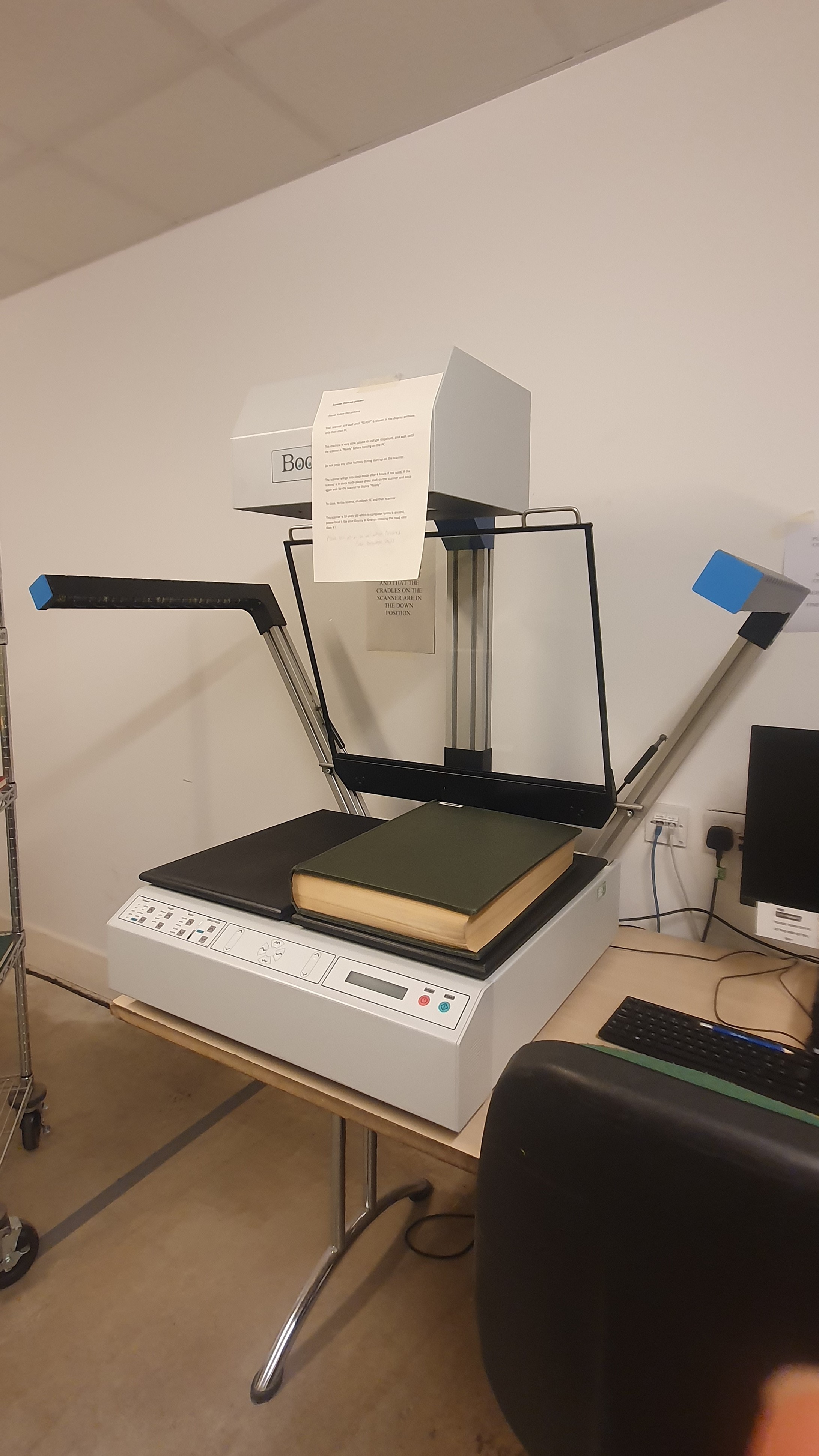

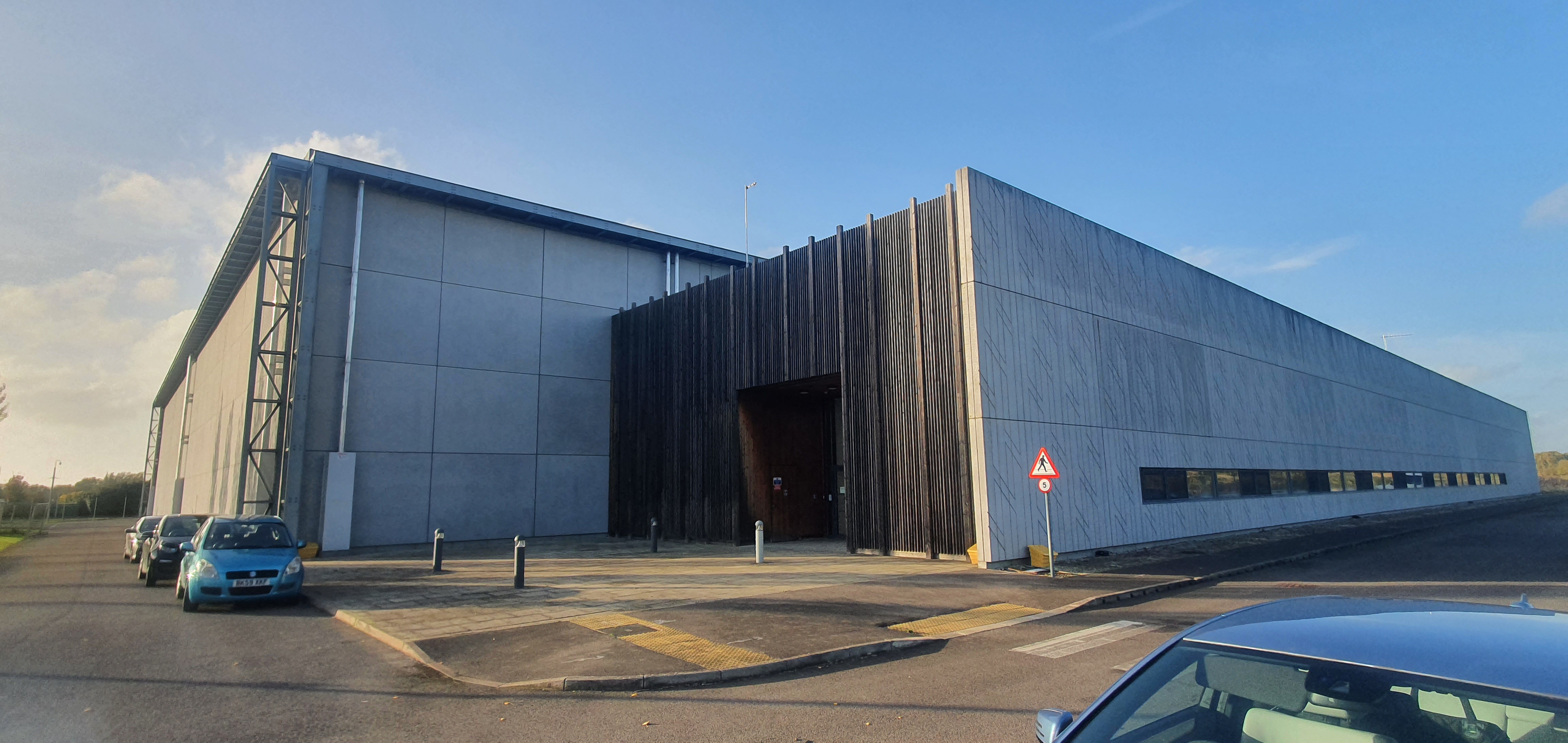








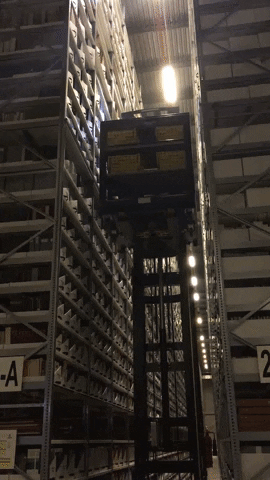








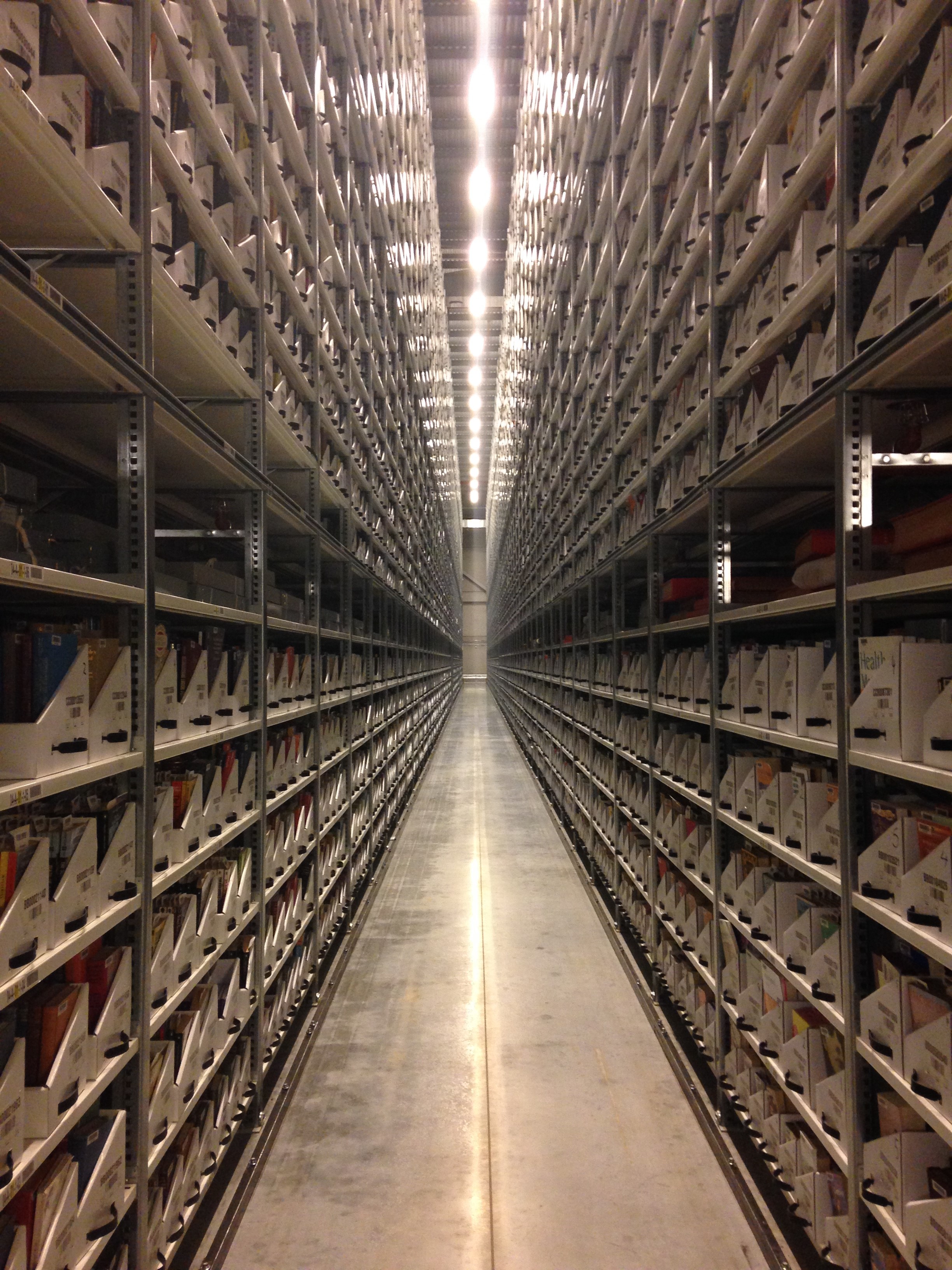







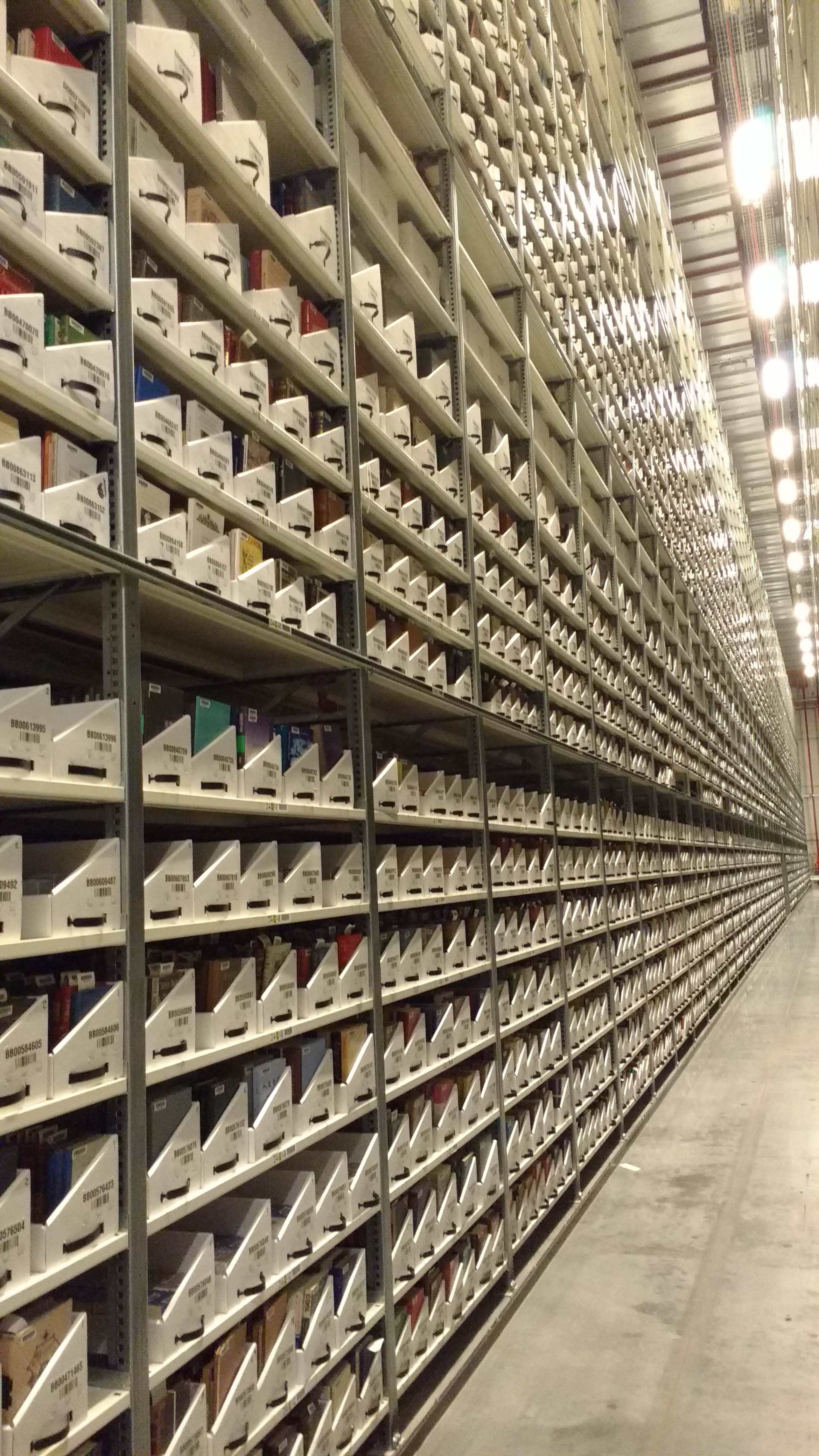







Recent Comments